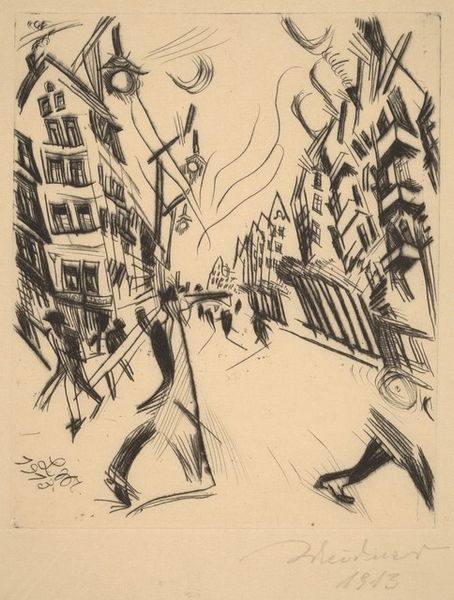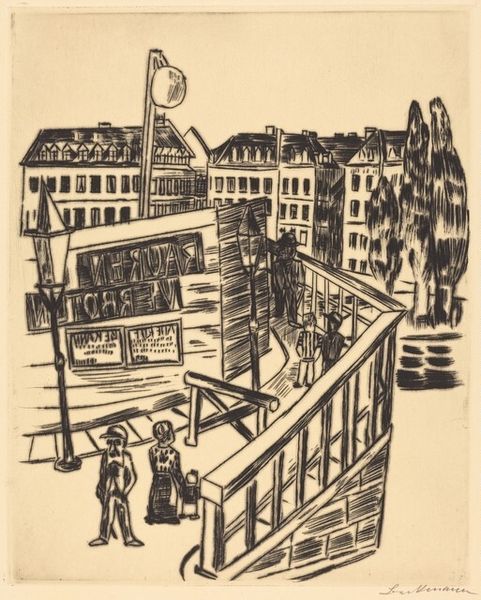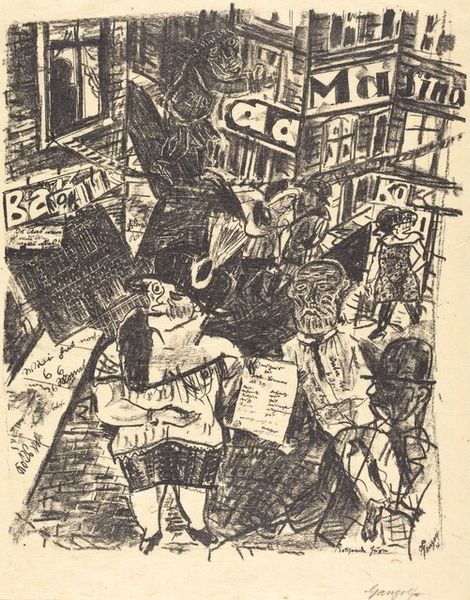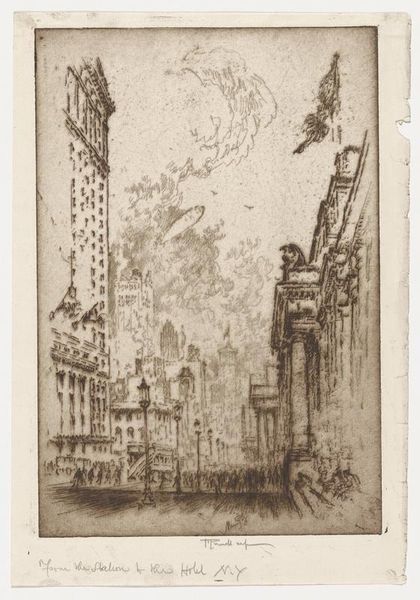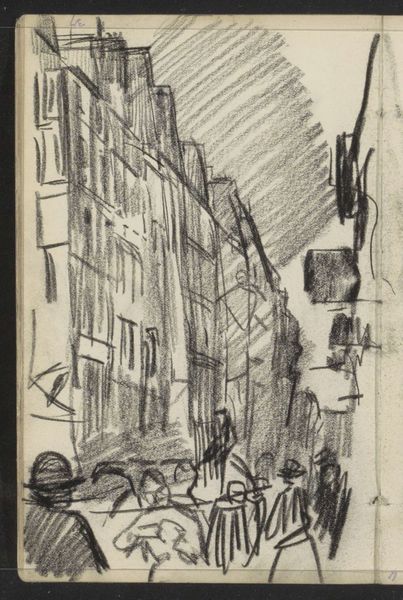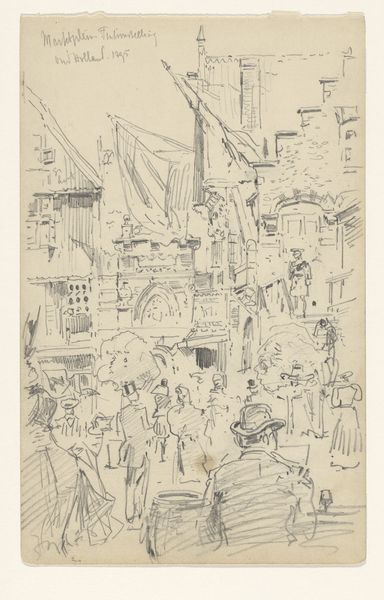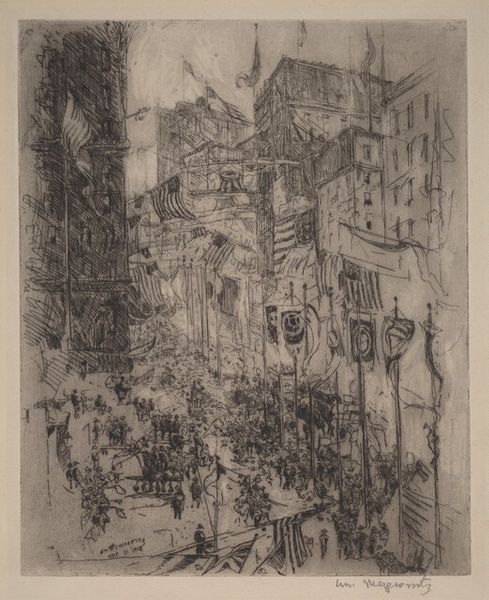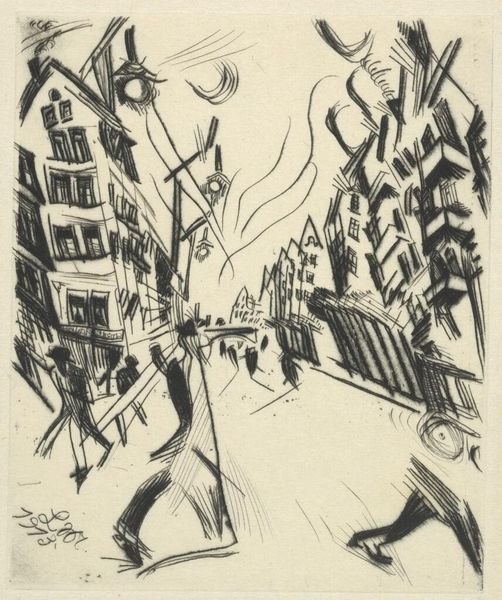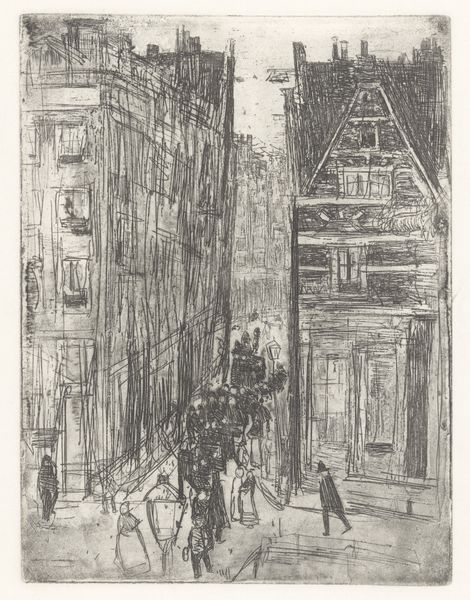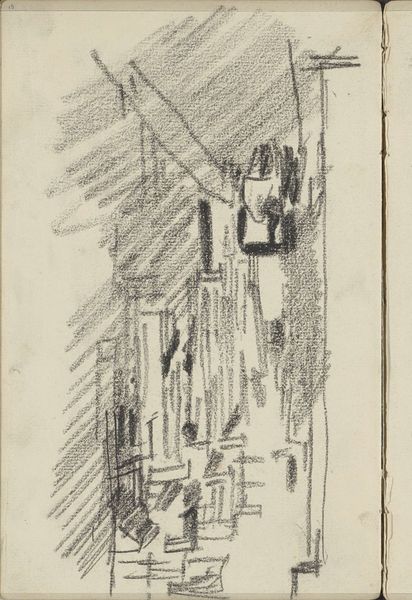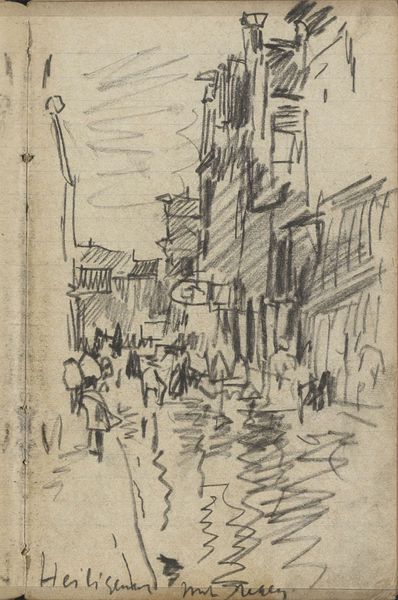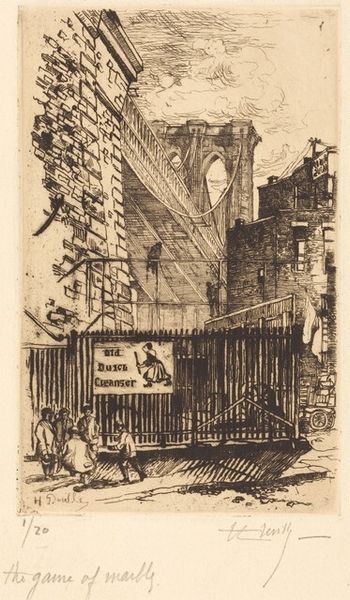
drawing, print, ink
#
drawing
#
ink drawing
#
street-art
# print
#
pen sketch
#
ink
#
expressionism
#
line
#
cityscape
Dimensions: plate: 14.9 × 13.9 cm (5 7/8 × 5 1/2 in.) sheet: 33.6 × 25.2 cm (13 1/4 × 9 15/16 in.)
Copyright: National Gallery of Art: CC0 1.0
Curator: What a jumble! It's almost nauseating with all those skewed buildings. Editor: Indeed. Here we have Ludwig Meidner's "Street II," created in 1913. It's an ink drawing, a type of print that captures the frenetic energy of the pre-war era. Curator: Looking at the density of those ink lines, the weight, and the method... it speaks to an urban environment characterized by anxiety, by instability. The visible labor that goes into creating such visual turmoil really reinforces that reading. Editor: Absolutely. Consider the context. The Expressionists, Meidner among them, were grappling with a rapidly changing society, industrialization, urbanization, and a growing sense of alienation. His streets aren't celebrations, they’re psychological landscapes of a society on the brink. Note also the distorted architecture. This isn't just about form; it reflects the subjective experience of living through a period of massive upheaval, social tensions, and fears of impending war. Curator: What really strikes me are the methods Meidner employed here. See the thinness of the ink on parts of the street but how heavy he applied it on other locations of the building and shading of people? How might these textural variances influence our understanding of the socio-economic circumstances? The work is a testimony to the experience of the masses, but a material reflection on economic disparity, too. Editor: Good point. And don’t forget how these crowded streets often serve as stages for social dramas. Think about how modern life created new types of anxieties around individual and collective identity. This chaotic urban scene, so well represented through its materiality and lines, is really a reflection of that emerging modern subject in crisis. Curator: So, in his process we observe an effort to grapple with that instability, too? By creating such distortions with his lines, there seems to be some recognition on his part with the reality of a destabilized world, especially with new industry being built at the time? Editor: Precisely. It all points toward examining art and urban theory together. I find this ink print deeply affecting in capturing such societal anxiety. Curator: Yes. The more we unpack this visually restless "Street II," the more the artist’s working conditions allow us to explore labor concerns as they related to a very complicated and revolutionary historical moment.
Comments
No comments
Be the first to comment and join the conversation on the ultimate creative platform.
